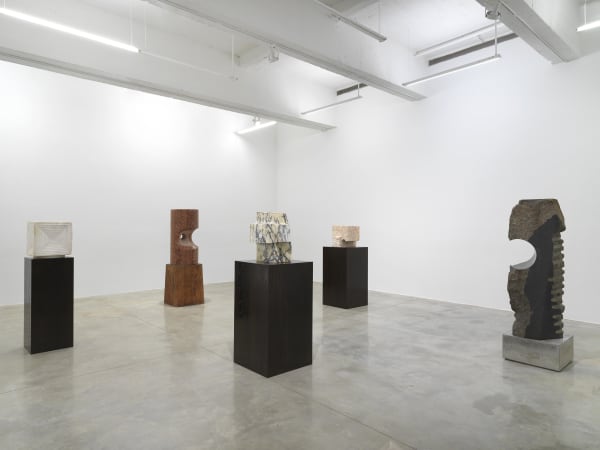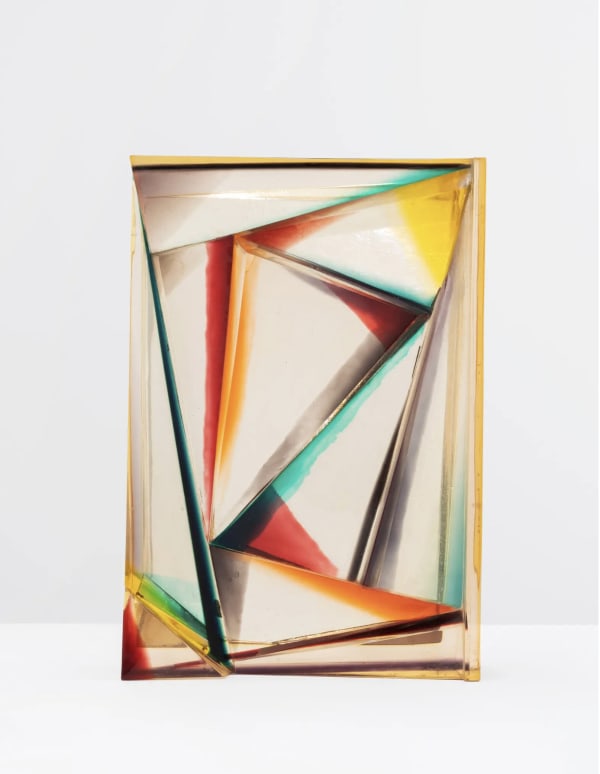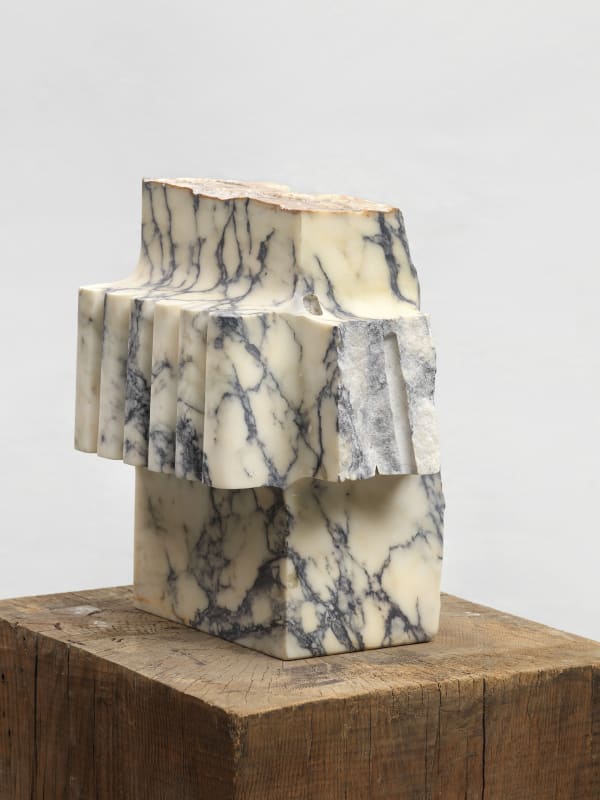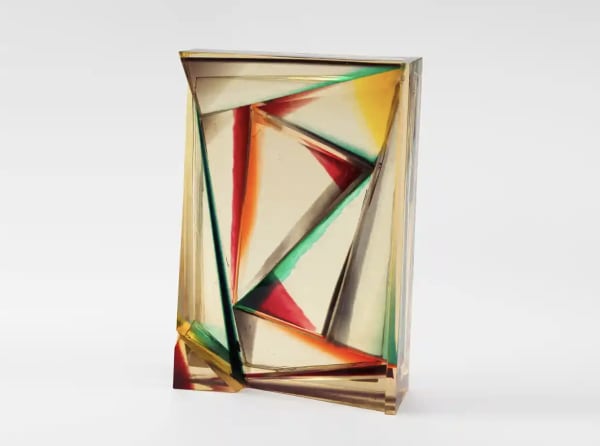The Unseen Professors: Leo Amino (1911-1989), Minoru Niizuma (1930-1998), John Pai (b. 1937)
New York, NY — Curated by John Yau, the exhibition, The Unseen Professors: Leo Amino (1911-1989), Minoru Niizuma (1930-1998), John Pai (b. 1937), focuses on the sculptures of Leo Amino, Minoru Niizuma, and John Pai, three Asian artists who were born in Taiwan, Japan, and Korea between 1911 and 1937, and immigrated to America. Eventually, all of them moved to New York City, where they worked and taught for many years in leading institutions, such as Cooper Union, Pratt Institute, and Columbia University. In fact, despite belonging to different generations, their teaching careers overlapped for more than decade (1964-77), during which time a generation of artists associated with Minimalism and site-specific art gained much of the art world’s attention.
During the period in which they were teaching and exhibiting, both here and abroad, the following essays were published: “Specific Objects” (1965) by Donald Judd and “Sculpture in the Expanded Field” by Rosalind Krauss. Neither of them mentions a single sculptor of color at a time when there were almost no critics of color who could offer an alternative vision to their influential viewpoints. By gathering together a group of sculptures made of different materials (wood, polyester resin, marble, granite, and steel), this exhibition will demonstrate that there was a group of artists who had roots in other histories and philosophies than the one that was narrowly defined by Judd and Krauss.
It is high time we place the oversights of Judd and Krauss in context. Between 1947 and ’62, Amino, who had taught at Black Mountain College (Summer of 1946 and ’50) and was the first American sculptor to work with polyester resin (plastic) after World War II, showed in all but two Whitney Annuals between 1947 and ‘62. Niizuma and Judd had work in the Whitney Annual of 1966 and Niizuma’s work was also shown in the Whitney Annual two years later (1968), in which Judd’s work was not included. Although Niizuma was included in these two exhibitions, none of his sculptures entered the museum’s collection. Pai’s work is not in the museum collection, while Amino has one work. The underrepresentation of these three sculptors, all of whom were actively working and teaching for many years in New York, is one impetus of the exhibition. The larger goal is to introduce a new generation of viewers to three distinguished Asian American sculptors working in different mediums, and employing different processes, as they followed their own trajectory and attained something particular and unique in their work.
By reexamining this period through significant works by Amino, Niizuma, and Pai, The Unseen Professors: Leo Amino (1911-1989), Minoru Niizuma (1930-1998), John Pai (b. 1937) will highlight the significant accomplishment of three independent Asian-born artists who never were associated with a mainstream movement or style. Equally important is that the work and material choices of these Asian-American artists have almost nothing in common with each other. Each rigorously pursued their own trajectory and never attempted to become part of the currents dominating the New York art world at that time. This refusal to work in an approved style may have been due to the realization that they would always be outsiders or outliers, no matter what they did.
Images (left to right): Leo Amino (1911 –1989), Refractional #184, 1983, Polyester resin; Minoru Niizuma, Crenel, 1975, Verona red mrble, 39 x 19 x 19 in, 99.1 x 48.3 x 48.3 cm; John Pai, Involution, 1974, 40 x 40 x 40 in, 101.6 x 101.6 x 101.6 cm.
ABOUT LEO AMINO
Leo Amino was born in 1911 in the then-Japanese colony of Taiwan, before moving to Tokyo at a young age. Immigrating to the US in 1929 as a 17 year old, he attended San Mateo Junior College in California before crossing the country to New York, where he briefly attended New York University. Amino eventually studied direct carving with Chaim Gross at the American Artist’s School in 1937, stepping onto a national artistic stage through his inclusion alongside Isamu Noguchi at the 1939 World Fair in New York. 1939 also marked the first hostilities of World War II, during which Amino was made to work as a translator for the US Navy, beginning his first forays into plastics shortly after the military declassified polyester resin. Their transparent, malleable qualities inspired his forays into acrylic sculpture, making him one of the earliest artists in the US to work with plastics, a practice he continued through the rest of his life.
Invited to teach at Black Mountain College by Josef Albers for two summers in 1946 and 1950, Amino flourished as an educator and artist. He was included 13 times over 15 years in the Whitney Museum of American Art’s Annual exhibition from 1947 - 1962, and was featured in the decade defining 1950 Carvers-Modelers-Welders at The Museum of Modern Art, as well as the 1951 American Sculpture at The Metropolitan Museum of Art. Amino went on to teach at the Cooper Union from 1952 to 1977, mentoring generations of artists, including Jack Whitten. He passed away in 1989.
ABOUT MINORU NIIZUMA
Born 1930 in Tokyo, Japan, Minoru Niizuma immigrated to the United States in the postwar period, following his education at Tokyo National University of Fine Arts and Music, and his subsequent local success exhibiting with the Modern Art Association in Tokyo. Settling in New York in 1959, Niizuma joined the Brooklyn Museum Art School in 1964 as a teacher, while simultaneously stepping deep into the emerging artistic cluster that came to be affiliated with the term “Minimalism.” Throughout his life, Niizuma worked in series, mostly focusing on refining and iterating a single form over the course of several years. With his carved stone works, sitting on the edge of symbolic figuration with their distinctive juxtapositions of smooth and rugged texture, Niizuma was included in shows at the Whitney Museum of American Art and the Guggenheim. Niizuma also privileged other means of exposing the public to his works, his works prized in both institutional and commercial sculpture gardens. As a result, he began to place works in museum collections including the Hirshhorn Museum, the Guggenheim, SFMOMA and the Museum of Modern Art.
Following his six years at the Brooklyn Museum, Niizuma was named an adjunct professor at Columbia University, where he taught from 1972 through 1984. In the early 80’s, he began a pivot that would carry him into the last 20 years of his life and work, when he traveled to Portugal as part of the Evora Symposium. The immense array of marble and stone available in the European nation brought Niizuma back time and time again, eventually resulting in a partnership with Portuguese President Mario Soares to build artistic exchange between Portugal and Japan. Niizuma passed away in 1998.
ABOUT JOHN PAI
John Pai’s childhood was defined by constant migration between places, his parents moving back and forth to South Korea over the course of World War II and the Korean War. Born in Seoul in 1937, Pai immigrated to the U.S. at age 11, though his parents returned to Korea shortly after. He was marked as an artistic talent early on, from his first solo exhibition at age of 15 at the Oglebay Institute in Wheeling, West Virginia, to his rapid rise as the youngest ever professor at the Pratt Institute.
Pai ascended to this latter honor in the midst of studying for his MFA in Sculpture at Pratt, just after completing his BFA in Industrial Design there in 1962. Across his undergraduate and graduate work, he simultaneously served as assistant to the Constructivism-adjacent sculptor Theodore Roszak. By 1965, he was named the Undergraduate Chair of Pratt’s Sculpture Department. Pai proved a talented educator, holding various chair positions at Pratt until 1972, when he shifted into a standard professorship in order to focus on his own artistic practice. While simultaneously nurturing generations of sculptors and fostering the burgeoning Korean artistic community in New York, Pai found success exhibiting his oftentimes unfolding, geometric sculptures across Korea. He continued to teach at Pratt until 2000.
Recently, Pai has shown at the Smithsonian Museum of American Art, and the National Museum of Modern and Contemporary Art, Korea. He resides in Fairfield, Connecticut.
ABOUT JOHN YAU
John Yau is a poet, fiction writer, art critic, publisher, and curator. Known for his attentiveness to visual culture and linguistic surface, he has published widely. His most recent book of poems is Genghis Chan on Drums (Omnidawn, 2021). Recent monographs include Liu Xiaodong (Lund Humphries, 2021), Thomas Nozkowski (Lund Humphries, 2017) and Catherine Murphy (Rizzoli, 2016). In 1999, he founded Black Square Editions, a small press devoted to poetry, fiction, translation, and criticism. His reviews appear regularly in the online journal Hyperallergic. In 2020, he received the Rabkin Prize for his art criticism.
Yau recently finished a monograph on Joe Brainard, which Rizzoli will publish in the fall of 2022. His next project is a monograph on John Pai for Rizzoli.
ABOUT TINA KIM GALLERY
Founded in New York in 2001 by Tina Kim and located in Chelsea, Tina Kim Gallery is celebrated for its unique programming that emphasizes international contemporary artists, historical overviews, and independently curated shows. With the gallery’s strong focus on Asian contemporary artists, Tina Kim has become a leading figure in introducing the Korean Dansaekhwa art movement to the American audience. Furthermore, she has created a platform for emerging and renowned artists such as Lee Seung Jio, Pacita Abad, Kim Tschang-Yeul, Tania Pérez Córdova, Minouk Lim, Davide Balliano, and Suki Seokyeong Kang. Through its programming, the gallery works closely with internationally renowned curators for special exhibitions and produces scholarly art publications.
SALE INQUIRES
inquiries@tinakimgallery.com
+1 (212) 716-1100
PRESS INQUIRES
Jillian Scott | Third Eye
jillian@hellothirdeye.com
+1 (212) 355-9009 x 313
-

The Unseen Professors Leo Amino (1911-1989), Minoru Niizuma (1930-1998), John Pai (b. 1937)
International Examiner January 7, 2022“When silence is prolonged over a certain period of time, it takes on new meaning.” ― Yukio Mishima Mishima certainly spoke volumes in the quote...Learn More -

What to See in N.Y.C. Galleries Right Now | The Unseen Professors
The New York Times December 17, 2021As the writer and curator John Yau points out, grouping the sculptors Minoru Niizuma (1930-1998), Leo Amino (1911-1989) and John Pai (born 1937) as “Asian...Learn More
-

The Unseen Professors: Leo Amino, Minoru Niizuma, John Pai
TheGuide.Art December 15, 2021“The work is the most important thing,” said John Yau, curator of “The Unseen Professors,” a deeply researched group exhibition at Tina Kim Gallery. “There’s...Learn More -

This show is a historical event’: celebrating ‘unseen’ Asian American artists
The Guardian December 7, 2021A groundbreaking new show in New York showcases the work of three under-recognized Asian American sculptors who worked and taught in the city during the...Learn More


